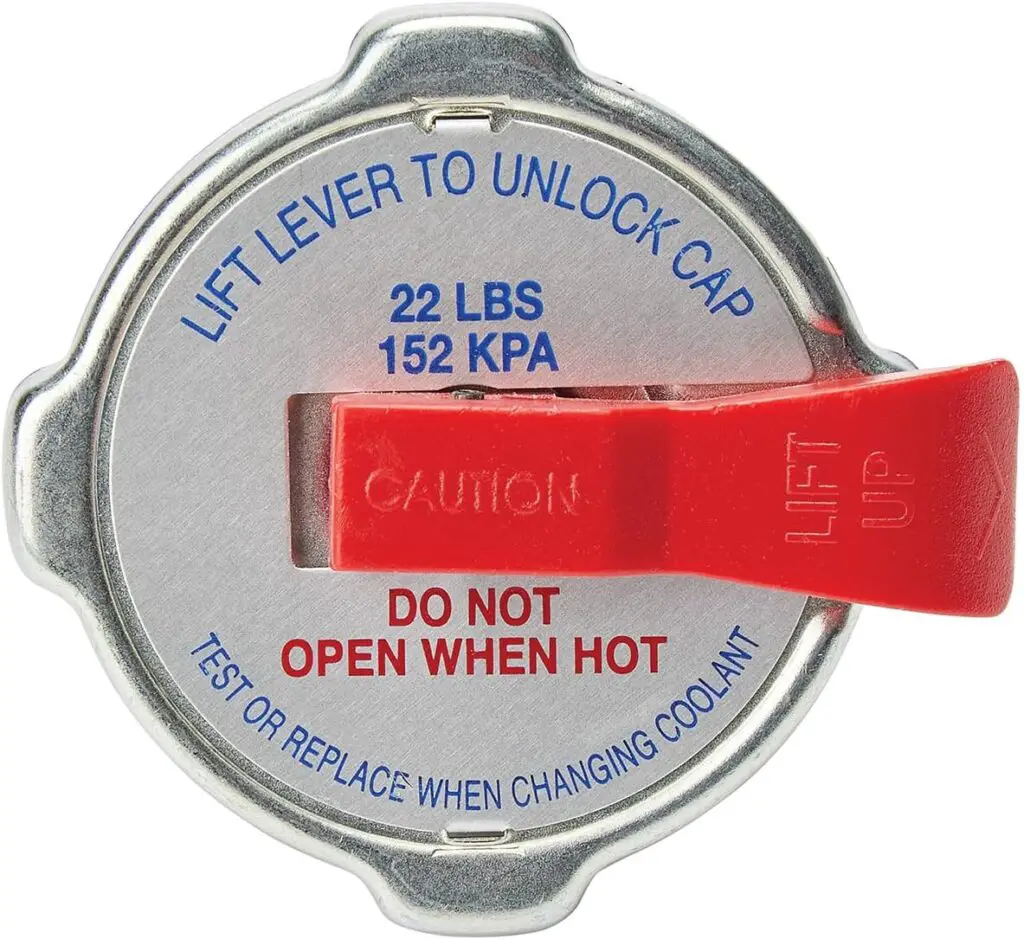To find the right PSI radiator cap for your vehicle, check the recommended pressure rating in your owner’s manual, as most passenger vehicles use caps rated between 13-16 PSI. Choosing a cap with the correct PSI ensures your cooling system maintains proper pressure and prevents overheating.
When it comes to maintaining your vehicle’s cooling system, one often-overlooked component is the radiator cap. While small, this cap plays a critical role in keeping your engine at a safe operating temperature by maintaining the correct pressure in the cooling system. A properly functioning radiator cap prevents coolant from boiling, regulates pressure, and protects against potential overheating. But a common question among car owners is: What PSI radiator cap do I need?
In this blog post, we’ll break down everything you need to know to select the right PSI radiator cap, along with answers to some common questions.

Contents
Determining the Correct PSI Radiator Cap for the Vehicle
When selecting a radiator cap, it’s important to consider your vehicle’s specifications and operating conditions. Here are the key factors to guide you:
1. Consult the Vehicle’s Manual
The best source of information for your vehicle’s radiator cap PSI rating is the owner’s manual. Manufacturers design cooling systems with a specific pressure in mind, typically around 13-16 PSI for most passenger vehicles and 16-18 PSI for larger trucks or high-performance vehicles. The manual will provide the recommended PSI range to ensure proper radiator cap pressure without compromising safety or performance.
2. Understand PSI Ratings and Their Impact
PSI (pounds per square inch) measures the pressure that the radiator cap can hold before releasing coolant. The typical PSI ratings are as follows:
- 10-12 PSI: Suitable for smaller, low-performance vehicles or motorcycles.
- 13-16 PSI: Standard for most passenger cars, including sedans, SUVs, and light trucks.
- 16-18 PSI or Higher: Commonly used for high-performance vehicles or larger trucks that require a higher cooling capacity.
Using a cap with a PSI rating that’s too high for your vehicle can strain the cooling system and increase the likelihood of hose or seal damage. Conversely, a lower-than-recommended PSI rating may lead to overheating, as it will cause the coolant to boil at a lower temperature.
3. Consider the Driving Conditions
Certain driving conditions may require slight adjustments to the radiator cap PSI. For example:
- Towing or Heavy Loads: If you frequently tow heavy loads or drive in high-temperature climates, you might consider a slightly higher PSI cap (within the manufacturer’s recommendations) to help the cooling system handle the extra stress.
- High-Performance Driving: If you engage in high-speed or off-road driving, especially in modified or high-performance vehicles, a radiator cap with a higher PSI rating can improve cooling efficiency.
However, always check the manufacturer’s guidance before changing PSI levels to avoid system stress or voiding your warranty.
4. Inspect the Existing Radiator Cap
If you don’t have access to your vehicle’s manual, inspect the current radiator cap for information. Most caps are marked with a PSI rating that matches the original specifications. However, ensure the cap is the original or a proper replacement, as previous owners or mechanics may have installed the wrong PSI cap.
5. Aftermarket Radiator Caps and Performance Modifications
If you have modified your vehicle’s engine or cooling system, you may need a radiator cap with a different PSI rating. For example, aftermarket turbochargers or superchargers produce more heat and may require a higher PSI cap to prevent coolant boil-over. In these cases, it’s wise to consult with a specialist or performance mechanic to choose the best PSI rating.

Frequently Asked Questions
Here are some FAQs about radiator caps –
1. What happens if I use a radiator cap with the wrong PSI?
Using a cap with the wrong PSI rating can lead to several problems:
- Higher PSI: Risks damaging hoses and seals, as the system may operate under excess pressure.
- Lower PSI: Reduces the coolant’s boiling point, making the engine more prone to overheating, especially under high load or temperature.
2. How often should I replace my radiator cap?
Generally, radiator caps should be checked as part of regular maintenance, but replacement may only be necessary every 4-5 years or if signs of wear are evident. Factors like driving conditions, climate, and coolant type can affect cap lifespan.
3. Can I use a high-performance radiator cap on a regular vehicle?
It’s not recommended unless your vehicle has modifications that demand a higher PSI. Standard cooling systems are calibrated for the PSI cap rating specified by the manufacturer, and exceeding that may lead to damage over time.
4. Are there different types of radiator caps?
Yes, there are standard radiator caps, lever-release caps (which allow pressure to be released before removing the cap), and caps designed for closed-loop systems that don’t use overflow tanks. Choose a cap that matches your radiator type and coolant system.
5. Can I test a radiator cap to check if it’s still working?
Yes, you can use a radiator cap tester, which simulates the pressure in the system. This device allows you to check if the cap is holding the specified PSI or releasing too early. Many automotive repair shops also offer cap testing. Check the article about Radiator Cap Not Holding Pressure.
Conclusion
Selecting the right PSI radiator cap for your vehicle is essential for maintaining an efficient and reliable cooling system. By consulting your vehicle’s manual, understanding PSI ratings, and considering driving conditions, you can find the best cap for your needs. Regular checks and timely replacement of the radiator cap will ensure your vehicle runs smoothly and avoids overheating.
So, the next time you’re due for a cooling system check, remember to pay attention to the radiator cap—a small but crucial part of your engine’s health.